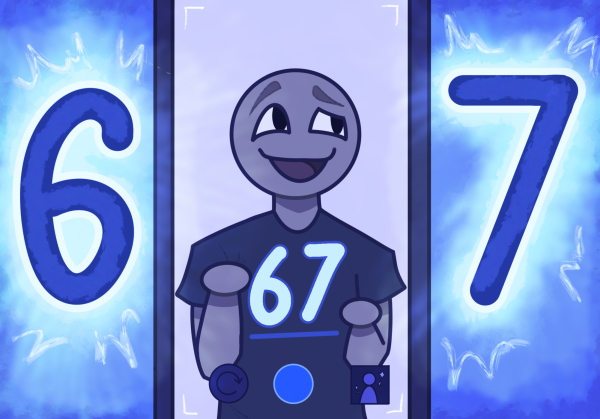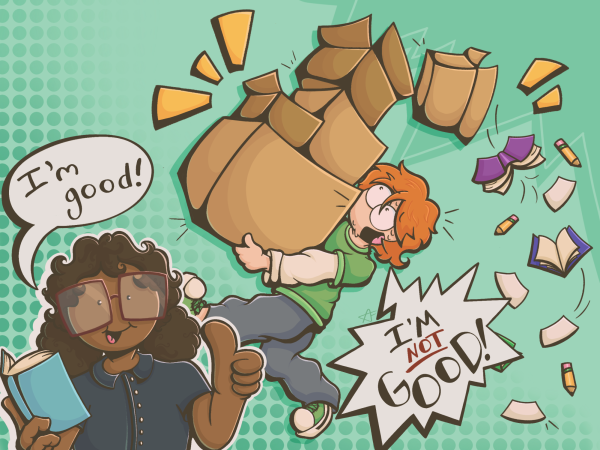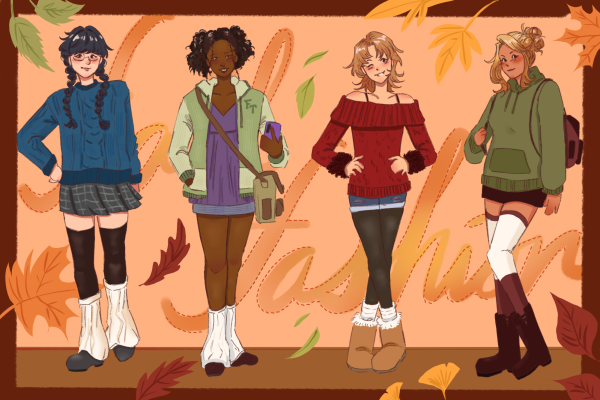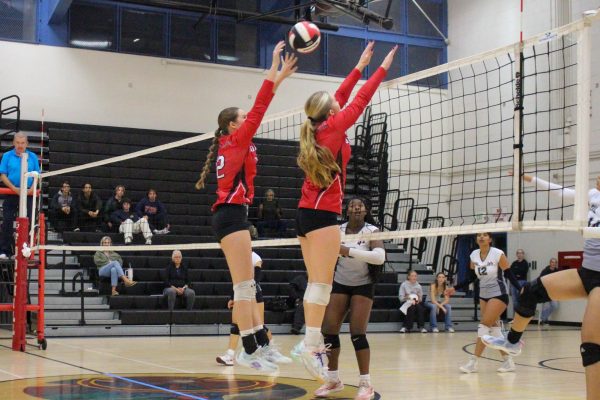COLUMN: A Ventura County officer in 2020, a new take on the police system in America
With the rise of the Black Lives Matter movement and the Biden Harris campaign, many have turned a critical eye to the men and women in uniform, but a Ventura County police officer is able to provide insight on the faults in these accusations and on why the actions of the few broadcasted on the news cannot, and should not be assumed to apply to the many in blue.
January 18, 2021
Our country’s current political atmosphere is polarized. The Black Lives Matter (BLM) movement has taken the world by storm, along with the Biden Harris campaign in a nation with extreme views on both politics and law enforcement. In an attempt to convey a broader perspective, a Ventura County police officer shared their take on the nation’s situation. What follows is a summary regarding the current justice system, how it can be adjusted and an officer’s opinion on why we’re perhaps at fault for criticizing all officers for the actions of a few.
To protect the officer’s privacy, the officer being interviewed will be referenced anonymously as Officer X and will be referred to with the pronoun they.
A career as a police officer
Growing up Hispanic in a neighborhood that shared their ethnicity, Officer X had some negative interactions with police officers. Officer X recalled that the police officers at that time were mostly white men returning from war with military training. Although these interactions never escalated into a physical altercation, Officer X learned to accept verbal mistreatment. The impact of these encounters later influenced Officer X to become a police officer themself. Once Officer X began their career as a police officer, their views shifted as Officer X met men and women who were proud of their responsibilities, hired from minority backgrounds and who were kind individuals.
Whether Officer X started working as a motorcycle officer in traffic or on patrol, they described how interactive their workplace is. When switching shifts, officers discuss any disruption they handled or may have had to visit. Sometimes, they go over past encounters; what did the officer at hand do and what should or could he have done differently? They’re thorough, and throughout the day they face a multitude of challenges. Officer X described how one day they may be coaxing a six-year-old into going to school, another perhaps talking down a teenage girl about to take her own life and the next maybe visiting the supermarket because someone doesn’t want to wear a mask.
In Officer X’s opinion, cops don’t go to work because they want to harm or shoot anyone, they go because they appreciate and respect their duties as police officers. Officer X also spoke about how uncomfortable some encounters can be. In a predominantly white city, Officer X has received calls from civilians about a “suspicious” black man in the neighborhood, and Officer X was required to go address it. “I’ve had very few confrontational experiences with minorities,” Officer X said, these encounters can later lead to an apprehended minority stating “you’re only doing this because I’m black/Hispanic,” and sometimes they’re correct. Officer X also described how they attempt to take accountability in their patrolling. If a black man is breaking a law while driving, Officer X pulls him over and explains to him exactly what Officer X would say to a white man: “you can’t allow your personal feelings to alter the way you do your job,” Officer X explained. Bias is inevitable in certain individuals, yet equal accountability and treatment is something this officer is proud of.
Training for local officers
The recruitment process itself is extremely strict in California, especially in terms of who is chosen to enter the academy. Throughout the 18 month process, candidates go through detailed background checks and psychological evaluations to determine if they are both mentally and physically fit for the job. Officer X noted that if around 1,000 people applied for recruitment, only around ten would receive a job offer and a small group of five would become officers. “We have a very rigorous psychological evaluation process,” with questions like these that follow, “Do you have a tendency to be aggressive? Are you passive? Are you emotionally unstable?” they described.
Officer X was taught how to calm down perpetrators who may be experiencing mental health episodes like extreme anxiety. Instead of forcing them to comply, Officer X offers them a distraction to calm them down. Usually, the person takes a moment to deescalate and trusts the officer a great deal more than if they had used force. Officer X also learned how to read the partners they work with. Officer X recently arrived at a scene where other officers had been provoked and attacked by perpetrators. Officer X noticed how emotionally involved they were in the situation and removed them from the scene. Officer X let his fellow officers calm down while more stable officers handled it. Officer X tries to address each situation with a level head and as nonviolently as possible. Local officers also engage in other methods of training, “annually we have sensitivity training which is how to be sensitive to the needs of others, to be empathetic, to be caring, to be receptive or how to recognize and assess when someone isn’t emotionally stable,” Officer X expressed.
The situation that resulted in George Floyd’s death
Officer X explained how the attempted arrest of George Floyd was a compilation of poor emotional decisions with no one more mature to intervene. The main officer involved, Derek Chauvin, had a history with George Floyd, and could very well have acted upon emotions regarding revenge and malintent. When the officer attempted to arrest him, George Floyd said he had claustrophobia and didn’t want to get in the car. Officer X spoke on this, mentioning that Officer X has experienced this same excuse multiple times. Officer X said it’s solely the question of whether or not they truly are claustrophobic or if they’re resisting arrest. Usually, Officer X says they offer to roll down the windows and handcuffs the perpetrator’s hands in front of them, and they often comply after this simple gesture of respect. In extreme cases, they can go to jail in an ambulance solely because they say they are too claustrophobic for the backseat. However, in George Floyd’s instance, there was no show of respect. This instance resulted in violence, a show of police superiority against apparent restraint and aggression perpetrated by police.
Although Officer X said they cannot speak on the training officers go through, a more humane means of arrest than pinning a man on his stomach would have been an easier option. Sitting him up against the tire or on the curb and allowing him to calm down so you can speak with him reasonably. No attempts at this were made. The surrounding officers made no comments on the actions of Chauvin, and Officer X guessed it was due to his seniority. “It’s human nature to be intimidated by someone with a lot more experience than you,” Officer X explained. Yet, there was no excuse for the officer’s actions in the death of George Floyd, “it doesn’t matter what their rank is, if someone is doing something wrong, someone better step up and remove that person from the situation so it doesn’t turn out to be a situation like George Floyd’s,” Officer X offered. Ultimately, the officers didn’t do anything illegal or outside of their bounds, but Chauvin’s actions were irresponsible and emotional in contrast to how the arrest could have occurred. It’s moments like these where we need to evaluate the officer himself, not the system entirely. A more emotionally stable officer without malintent could have handled the situation extremely better. Officer X offered this peaceful interaction, “it doesn’t take much to sit someone up, prop them up with their hands against the tire of the car, let their heart rate return to normal, because then most likely you’re gonna be able to put them in that car.”
The nation’s current opinions of law enforcement
Officer X believes that many people turn to extremes before truly considering the political situation. Movements like All Cops are Bastards (ACAB) and Blackout Tuesday can often be spread from societal pressure, with celebrities and teenagers spreading the word when they may not know the whole story. Yes, black lives matter, and yes police brutality needs to change, but throwing around ACAB doesn’t help the situation that’s already misinterpreted. The lateral vascular restraint (LVR) was recently banned in California regarding the death of George Floyd and the incident surrounding it. Although this restraint is banned, Officer X explained that in some circumstances this use of force can be beneficial, “studies have shown that when the LVR is utilized correctly, the injuries to the suspect and the injuries to the officer are cut in half. It’s much more humane than the use of a baton or physical force.”
Officer X described how the people in charge of those actions don’t understand their uses and benefits. The officer involved in George Floyd’s death had him pinned on his stomach with pressure on him, an extremely uncomfortable and inhumane means of arrest. Officer X explained how the LVR is utilized only in instances of extreme violence. It ultimately restricts two arteries on the sides of the neck to render someone unconscious. It can be humane as it can cut the amount of violence involved in arrests in half. Without the technique, more violence involving batons, tasers and even firearms could replace it.
Officer X also talked about the rights of police officers to use a “reasonable amount of force” on someone they’re attempting to arrest. This does not mean however that an officer should beat someone on the ground or discharge their firearm at the slightest sign of resistance. Most cops in this country want to minimize violence and respect those they come into contact with, yet because of poorly set precedence, people are angry and shocked by any sign of violence enacted by the police. If a perpetrator uses force against officers or fires at the police, in order to protect themselves and their partners, officers will use an equal or greater force to overcome that danger. An officer who was a friend of Officer X was recently called to a scene where someone was attempting suicide. The officers tried to talk them down but ultimately the individual attacked the officer and was shot and killed. The officer responsible still hasn’t returned to work due to the mental and emotional struggles that follow such actions. Officers in cities like Chicago, New York and San Francisco are matched by violence that’s off the charts. Cops don’t get in trouble for what they don’t do, but they face backlash for what they choose to act on. Bias is engrained in all of us, yet most police officers don’t have the motives to act on that agenda.
How can we make our law enforcement system better?
Officer X touched upon the importance of national training regulations. “I wholeheartedly think that our law enforcement profession needs to be better trained. When you look at the California standards, if we were to apply those standards nationally, we would see things change for the better,” Officer X mentioned.
Officer X also noted that the hiring of unqualified officers due to shortcuts or connections between family or friends needs to stop. Every single officer that is hired should be evaluated with the highest of standards. Officer X hopes we can learn from our mistakes and believes that they are not adding to the problems in our imperfect system and tries their best to prove that daily. When Officer X sees kids that resemble their younger self, Officer X speaks with them and tries to leave a positive impression, to overshadow the views Officer X grew up with and to hopefully let them know of the possibility and existence of honest and kind officers whose intentions are to aid, not intimidate.














